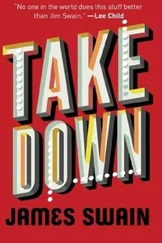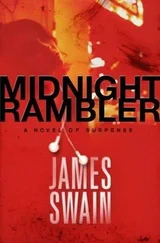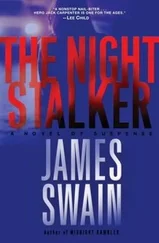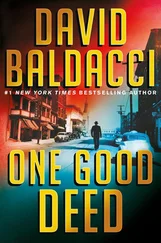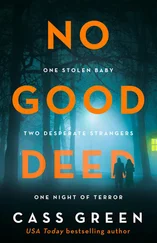“Do you mind if I ask you a question?” Lancaster asked.
“Go ahead,” Stahl said.
“I may run into Special Agent Daniels while I’m conducting my investigation. Would you mind telling me what she did to piss you off so badly?”
“Special Agent Daniels doesn’t like District III, and we don’t like her.”
“Sounds like you have a history.”
“That’s one way to put it. A couple of years ago, a ten-year-old was found strangled in the woods not far from here. We had a suspect, a high school junior named Lenny DeVito, who had possession of the dead kid’s bike. We got a sample of DeVito’s DNA and sent it to the crime lab. If it matched the DNA on the kid’s clothes, our case was solved.
“That same week, a local politician got shot to death answering his front door. The politician was fighting with his stepson over money, so the stepson gets hauled in, and his DNA also gets sent to the crime lab. Because the politician was connected, his stepson’s DNA test was put in front of DeVito’s test.
“That’s when Daniels swooped in. Whenever a juvenile gets murdered, the FBI takes a look at the case. Daniels reviewed the evidence and decided that a psychopath killed the kid, and not Lenny DeVito. She ordered my boss to have DeVito’s test done first. My boss doesn’t like to be pushed around, so he said no.
“The next day, the paper ran a story saying the sheriff wasn’t cooperating with the FBI, and how a rampaging killer may be on the loose. It made us look really bad.”
“So Daniels leaked the story to the paper. How did it play out?”
“My boss caved, and had the crime lab run DeVito’s test first. It was a match to the DNA found at the crime scene, just like we thought. DeVito was guilty.”
“So Daniels was wrong.”
“Dead wrong.”
“Did the paper run a follow-up story, and clear the sheriff?”
“We’re still waiting for that one.”
“I’m guessing Daniels didn’t apologize.”
“When hell freezes over. Let’s go.”
Ersatz pop music serenaded them as they walked through the mall to the GNC store, where the manager waited for them by the checkout. He had a shaved head and wore a tight-fitting polo shirt emblazoned with the store logo.
“We need to see your surveillance tapes from four days ago,” Stahl said. “Are they located on premises, or do you work with an outside security company?”
“The surveillance tapes are on a computer in the back room,” the manager said. “Can I ask what you’re looking for? I might be able to help you.”
“We think a lady named Elsie Tanner was in your store, buying supplements.”
“That’s the woman who was murdered,” the manager said.
“That’s right. Did you happen to see her?”
“I think so. She was a regular customer. Nice lady. I hope you solve this thing soon. We’ve hardly had any customers, and this is usually a busy time of year for us.”
They went down an aisle stocked with vitamins and supplements that promised to make their users bigger and stronger. The back room was for storage and had cardboard boxes piled to the ceiling and a desk with a computer, which the manager booted up.
“What time of day would you like to see?” the manager asked.
Stahl showed him the sales receipt. “That time.”
“Gotcha. I’ll pull up the video taken on the camera at the checkout.”
The manager worked the computer in slow motion. His forte was obviously sales, and Lancaster leaned against the wall to wait.
“What can you tell me about Elsie?” Stahl asked.
“She came in every few weeks, was always pleasant to deal with,” the manager said. “Pretty smart too. She could talk about any subject.”
“Did she ever mention any problems?”
“Not to me. Several of my customers knew her. She was well liked. Here’s the tape you’re looking for. Wait, I think that’s Elsie. Have a look.”
Most retail stores used security cameras to prevent theft, and these systems ranged from ultrasophisticated to cheesy. GNC’s system was first rate, and the image on the screen was sharp. Elsie Tanner stood at checkout with a tub of supplements tucked under her arm. She paid with cash and made a point of counting out her change.
The manager chuckled under his breath. “Elsie was a stickler about her change. One time, the cashier shorted her a few pennies, and she raised a real ruckus.”
Lancaster tuned the manager out and watched Elsie leave the store. If his hunch was correct, her killer had also been in the store, or in the mall, or in the parking lot, and had followed her home. If his hunch was wrong, and Elsie’s assailant hadn’t been in any of those places, then he was doing a fine job of wasting everyone’s time.
Several seconds passed. A large man wearing a cowboy hat entered the picture. He sported a Fu Manchu mustache and thick sideburns, and was dressed in black like a gunslinger in a spaghetti western. He did not buy anything and also left the store.
“Who’s that guy?” Stahl asked.
“Looks like Black Bart,” the manager said.
“Come again?”
“A gentleman bandit from the Wild West named Charles Boles, used to leave poetry behind after his robberies,” the manager explained. “I read a book about him in high school. That guy could be his twin brother.”
“Let’s take a look at him again.”
The manager rewound the tape and found Black Bart. He was big and wide and had a pack of smokes tucked in his shirt pocket. Lancaster shot Stahl a glance. He wanted to ask the manager some questions, but didn’t want to overstep.
“What are you thinking, Jon?” Stahl asked.
“Black Bart looks out of place,” he said. “He didn’t buy anything, and he smokes.” The deputy shook his head, not making the connection. It was the opening he needed, and to the manager, he said, “Do many of your customers smoke cigarettes?”
“Our customers don’t smoke. They’re health nuts,” the manager said.
“What kind of person comes into your store?”
“We get a lot of athletes who are looking for an edge. And people who are health conscious. Those are our two main groups.”
“Which group would Black Bart fall into?”
“Neither. He looks like a one-timer. One-timers never buy anything.”
A smoker wearing cowboy clothes in a health and nutrition store with a woman who would get murdered an hour later. Either it was a coincidence, or they’d found their man.
“I need you to print copies of Black Bart’s photo for us,” he said.
The manager typed a command. A printer hidden by boxes started to whir.
“Does the mall monitor the parking lot?” he asked Stahl.
“Twenty-four seven,” the deputy said. “The system is housed in the security offices. It’s a pretty sophisticated operation.”
“I need you to take me there,” he said. “I want to see if Black Bart followed Elsie to the parking lot. If he did, there will be a film of it. If we’re lucky, we might be able to read the license plate on his vehicle, and find out who he is.”
The manager brought them the copies of Black Bart’s photo.
“I hope you solve this,” the manager said. “Elsie was good people.”
The mall was closing, the stores rolling down their security grilles. Together, they jogged to the security offices by the north entrance. The mall had a number of modern features to deal with terrorists and active shooters, including bomb-proof trash cans and bulletproof security cameras, and Lancaster hoped the surveillance videos of the parking lot weren’t the usual Twilight Zone variety, but were instead high quality.
While he ran, he studied the photo clutched in his hand. Black Bart’s legs were pencil thin, and grossly underdeveloped compared to the rest of his body. The man looked deformed, and would not be difficult to track down.
Читать дальше


